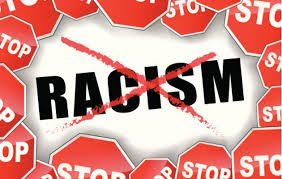Front National
May 10, 20172

Apartheid and White Racism – The Reasons
It is interesting how academics at South African universities (such as this Front National supporter) are looking from many angles at the problems facing the multiracial, black-dominated South Africa:
One of the phenomena of modern South Africa is black politicians and commentators forever referring back to Apartheid, Jan van Riebeeck, the evil whites that stole their land. For whites this is a lame argument, easily countered by reason and history. Yet, Zuma, Malema, Maimane and every Tom, Dick and Harry still use the accusation almost every week.
We know, and therefor treat it like, a deep-rooted inferiority complex. Maybe it is time we stand back and look at the psychological studies around the subject and try to understand why the white will always be the enemy and why black girls would all strive for long wigs and skin lighteners. Maybe then we will understand the black psyche.
Portia Adams, the foremost researcher into the condition, is from Fordham University. “Blacks were commonly understood to possess low self-esteem and, as a consequence, to suffer from a host of intra-psychic and interpersonal problems (Banks, 1976; Clark & Clark, 1950; Cross, 1991; Horowitz, 1939; Hoelter,1982; Lind, 1914; Scott, 1997).”
One of the first scientific inquiries into Black identity and self-esteem was made by Lind (1914), a psychiatrist who believed that all Blacks suffered to some degree from a color complex. He asserted that Blacks lived in an environment that confirmed their inferiority, which evoked defensiveness and pre-conscious wishes to be white.
Park and Stonequist, leading scholars in race relations, said the marginal man is a member of a subordinated group; “liberated from his own culture,” he endeavors to find his place in the new, mainstream culture (Scott, 1997, p. 22). The marginal man is caught between two societies; unfortunately the one he seeks to join (the White mainstream) rejects him. A person in this marginal position experiences low self-esteem, identity problems, spiritual instability, and malaise.
Thus scholars asserted blacks used whites as a reference in hair, skin, clothes, accessories, and life trappings such as homes and vehicles.
Black psychologists Clark and Clark (1939, 1947, 1950) conducted doll studies of children’s racial identification. Their findings were consistent with Horowitz’ suppositions. The Clark’s argued that racial
subjugation had substantially damaged the self-esteem of black children.
Race relations experts asserted that social proximity between Blacks and Whites often resulted in hostile and rejecting experiences for blacks (Scott, 1997).Though well intentioned to correct perceptions (as Dlamini-Zuma did only last week), it assumed all black children were in need of ‘mental hygiene’ and all black schools were inferior to white schools. It is a perception only in the black community.
Civil Rights and the Black Power Movements triggered Black racial pride, which resulted in positive Black personal self-esteem (Gurin & Epps, 1975; Hughes & Demo, 1989; McCarthy & Yancey,1971; Porter & Washington, 1979; Taylor & Walsh, 1979) – but only for young adult blacks.
The Locus of Control Model assumed that Blacks utilize system blame, an external locus of control, with a belief that discrimination is at fault; as a consequence, Blacks are able to protect their self-regard from societal critique (Crocker & Major, 1989; Hendrix, 1980; McCarthy & Yancey, 1971; Tashakkori & Thompson, 1991. This is evident in the continuous references to Apartheid and Jan van Riebeeck. Every system failure will be blamed on racism whenever there is societal critique.
Since the 1990s, self-esteem studies have focused on the low self-esteem of adolescent girls. Surveys conducted by the American Association of University Women[AAUW] (Haag & AAUW, 1990) and Brown and Gilligan (1992) depicted adolescent girls exchanging their own expansive and authentic selves for constricted and socially ascribed female roles. The rise in self-esteem among black girls (higher than among black boys) seems to be rooted in skin-lighteners, hair extensions and western clothing and make-up, plus a better command of European languages. As a result the cosmetic market for black women has skyrocketed right over the globe to a multi-billion dollar industry.
Even if of no significance to the political debate because it is based on irrational perspectives, it remains an interesting field of study. It also offers a rare insight into the psyche of the black South African politician, who, perhaps unconsciously, reveals much about his or her personality.
Read the original article on Front Nasionaal SA – blad
South Africa Today – South Africa News

